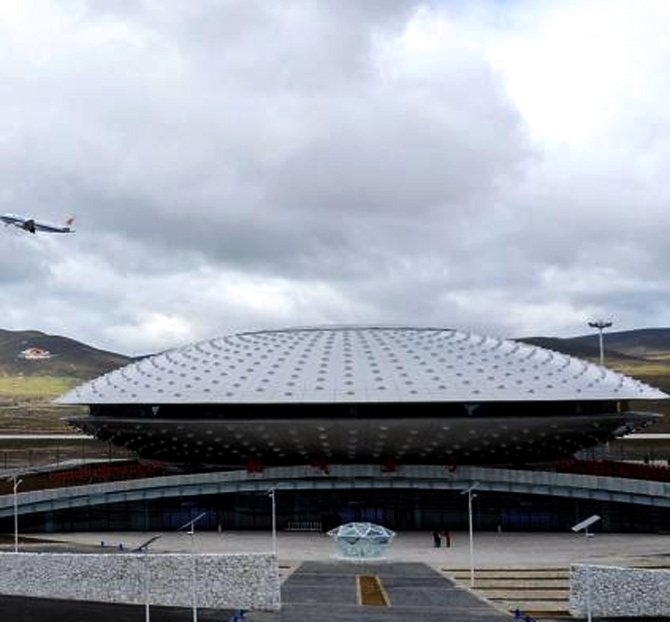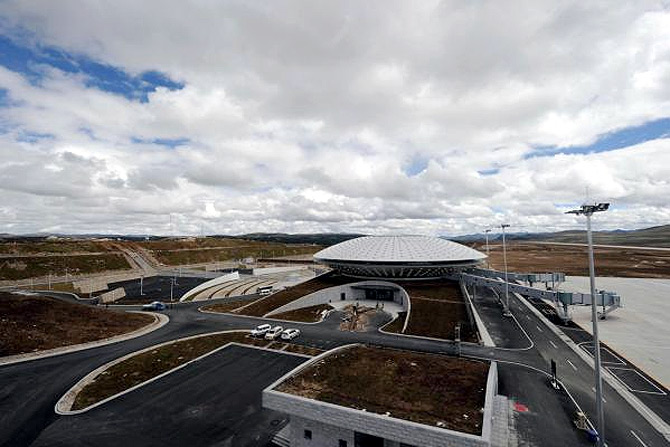
China has opened the world's highest civilian airport in a restive and remote Tibetan region of southwestern Sichuan province, which will cut journey time from the provincial capital from two days to a little more than one hour.
Daocheng airport in Garzi, a heavily ethnic Tibetan part of Sichuan, is 4,411 meters (14,472 feet) above sea level, and overtakes Qamdo airport in Tibet, which sits at 4,334 metres above sea level, for the title of world's highest.
…

The official Xinhua news agency said flights would initially connect with Chengdu, the provincial capital, otherwise a two-day bus trip away.
Flights to cities including Shanghai, Guangzhou and Chongqing will begin at a later date.
…

The 1.58 billion yuan airport, designed to handle 280,000 passengers a year, will help open up the nearby Yading Nature Reserve to tourism, Xinhua added, referring to an area renowned for its untouched natural beauty.
China has embarked upon a multi-billion-dollar programme in recent years to revamp old airports and build new ones, especially in the remote west, as a way of boosting the economy.
…

Some of these airports have been located in Tibetan regions, whose population chafes at Chinese political control, and often have a dual military purpose so troops can be bought in quickly during periods of unrest.
Garzi has been the scene of numerous self-immolation protests against Chinese rule in the last three years or so and remains under tight security.
(Reporting by Ben Blanchard; Editing by Ron Popeski)